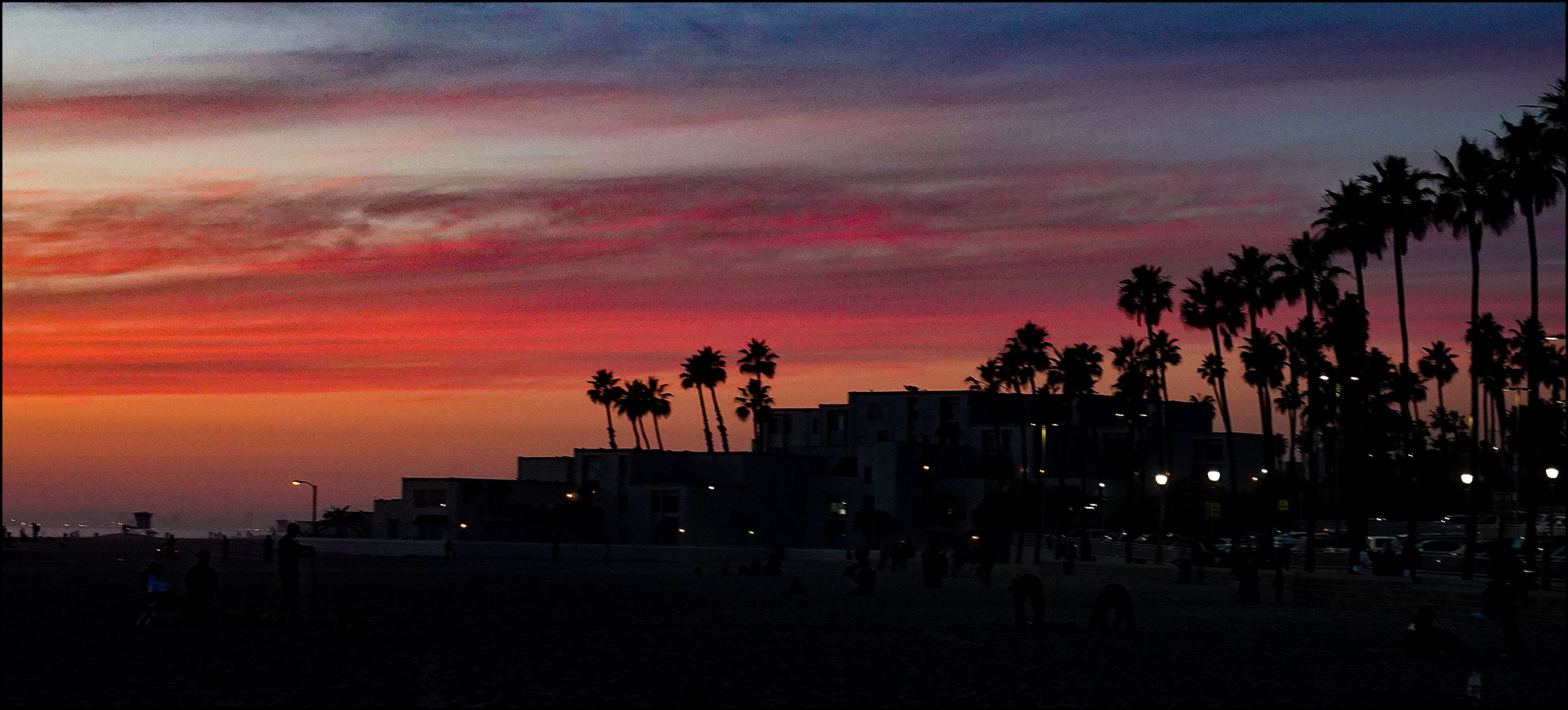These are white cosmos blooming against a field of California poppies and purple lupine. The picture was taken at the Farm + Food Lab in the Great Park, an "interactive outdoor classroom for visitors of all ages."

Cats, charts, and politics

These are white cosmos blooming against a field of California poppies and purple lupine. The picture was taken at the Farm + Food Lab in the Great Park, an "interactive outdoor classroom for visitors of all ages."

I am generally sympathetic with the CDC's desire to be extremely conservative in its pandemic advice. People might gripe, but that's a whole lot better than being a little too liberal and ending up with a bunch of dead bodies.
Still, enough's enough. Last week the CDC announced that "less than 10%" of COVID-19 transmissions have happened outdoors. That's technically true, but as David Leonhardt points out, badly misleading:
That benchmark “seems to be a huge exaggeration,” as Dr. Muge Cevik, a virologist at the University of St. Andrews, said. In truth, the share of transmission that has occurred outdoors seems to be below 1 percent and may be below 0.1 percent, multiple epidemiologists told me. The rare outdoor transmission that has happened almost all seems to have involved crowded places or close conversation.
Saying that less than 10 percent of Covid transmission occurs outdoors is akin to saying that sharks attack fewer than 20,000 swimmers a year. (The actual worldwide number is around 150.) It’s both true and deceiving.
The difference between 10% and 0.1% is more than just a couple of orders of magnitude. It's the difference between "still a little bit dangerous" and "totally safe to have fun in the sun." The former just isn't true, and the latter could easily be made 100% accurate by adding something simple, like "but still best to avoid big crowds."
So why not do that?
There are two gasoline stations near me. The first is a Mobil station that currently charges $3.89 for a gallon of regular. Across the street is a Chevron station that charges $4.29.
That's a 10% difference, and it's nothing new. The Chevron station is always 30-40 cents more expensive than the Mobil station and has been for years.
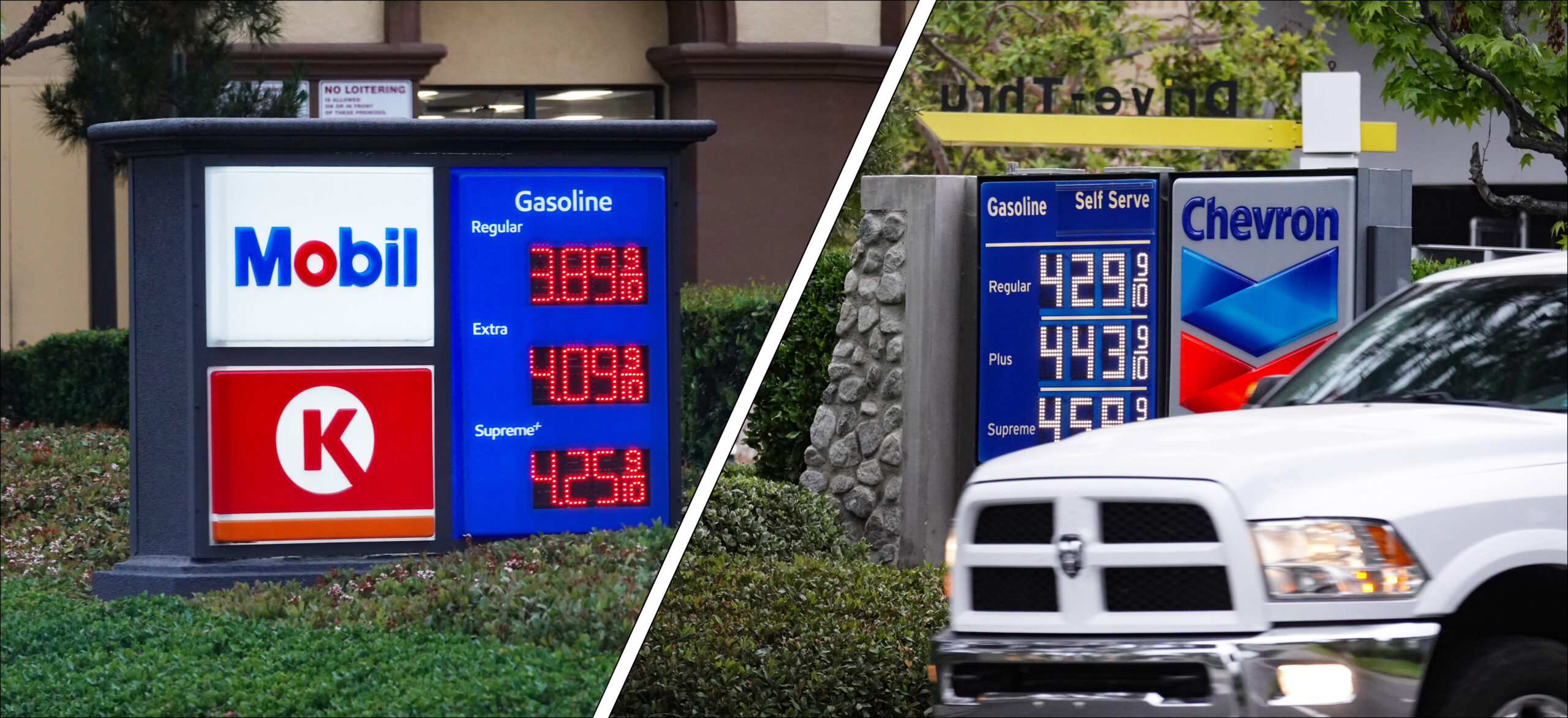
How can this be? The Chevron station is smaller, but both seem to be pretty busy most of the time. They're both equally convenient. Both have mini-marts attached to them.
Do people in my upscale neighborhood just not care about price? Maybe, but then why doesn't the Mobil station raise its price?
Does the Chevron station not care about attracting more customers? Why not?
Aside from these two, there isn't another gas station for a mile in any direction. They have a monopoly on the local market.
What's going on?
Tim Skellet reminds me to do a final postmortem on the Swedish pandemic experiment. As you'll recall, they basically went about business as usual on the premise that the coronavirus would do what it was going to do regardless of what measures they took. So how did that work out?
One thing that's universally agreed on is that they did a terrible job with the elderly. Their death rate in nursing homes was quite high, and they plainly could have done more to stop it.
More broadly, though, here's how their death rate compares with every other country in Europe:
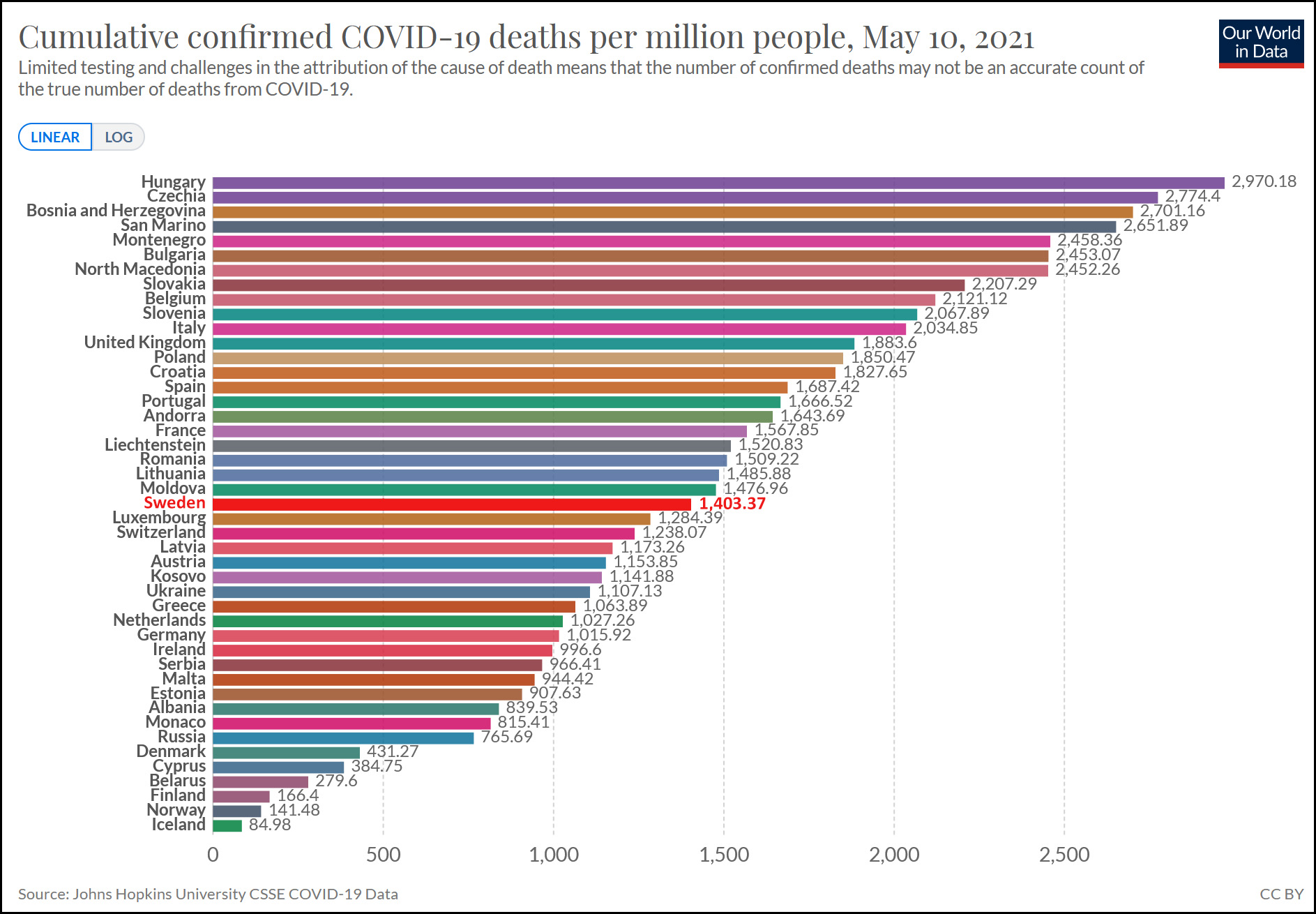
Here's a look at COVID-19 deaths over time:
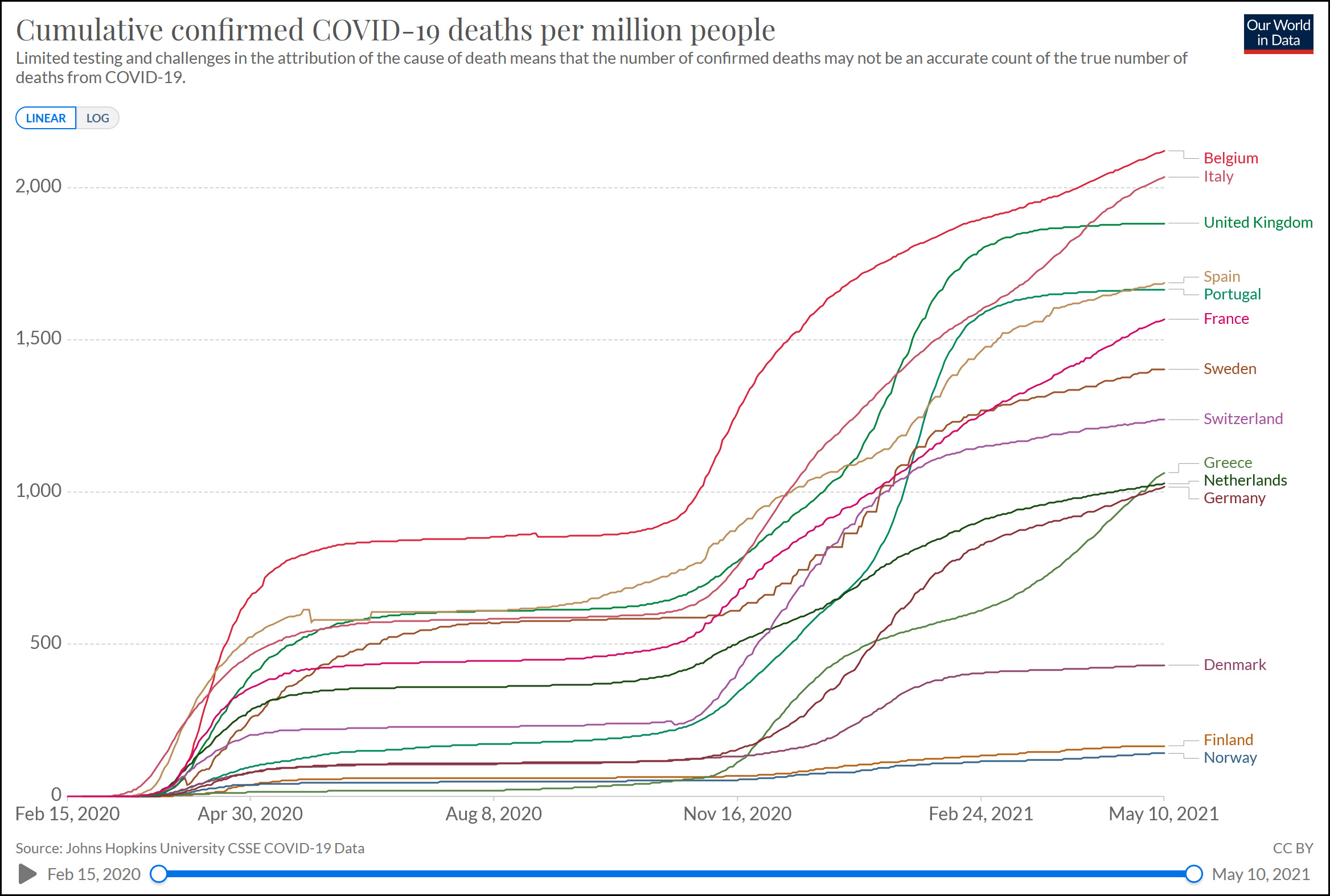
In both cases, Sweden is about in the middle. As usual, though, their performance depends on who you're comparing them to. Compared to the rest of Europe, they're so-so. Compared to other Nordic countries, their mortality rate per million is terrible:
Did any of this pay off in better economic performance compared to the rest of Europe?
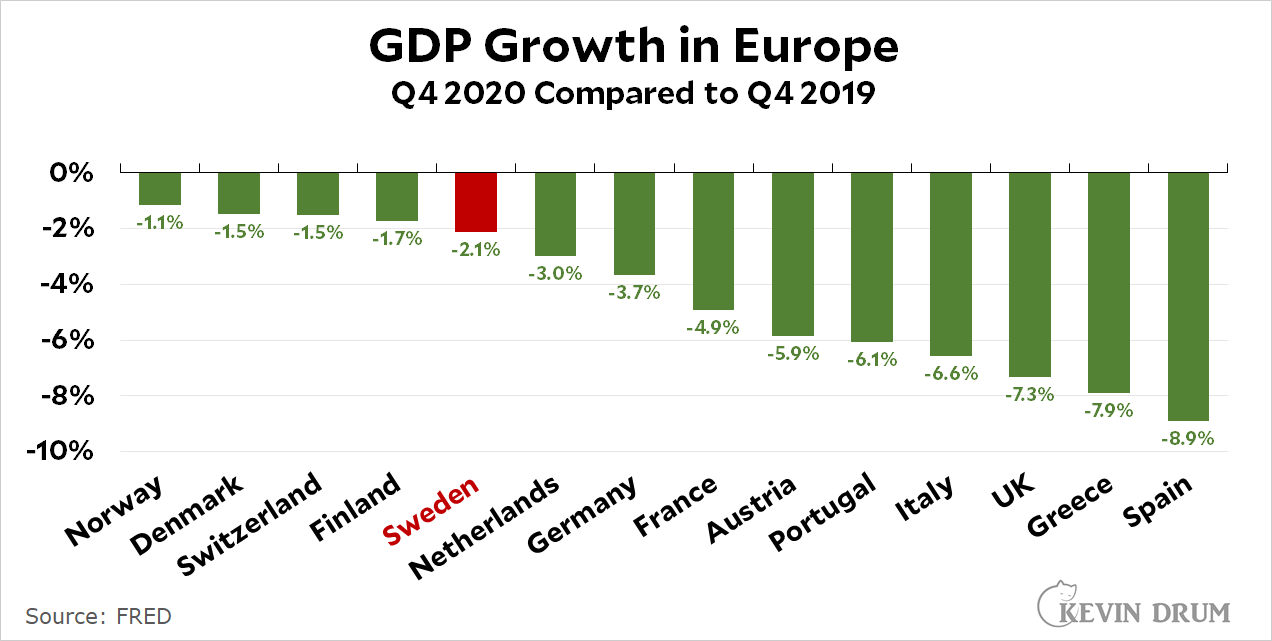
Again, it depends on who you're comparing to. Sweden did pretty well compared to other European countries in general, but not as well as the other Nordic countries.
So I'm honestly not sure how to judge Sweden. If you compare them to other Nordic countries, which all took more aggressive countermeasures, their death rate is higher and their economic performance is worse.
But if you compare them to all the other countries of Europe, which also took more aggressive countermeasures, their death rate is lower and their economic performance is better.
It all boils down to whether there's something special about Nordic countries that makes them a proper unit of comparison. I don't have an answer to that, so perhaps this isn't really the final postmortem after all?
The senior senator from Hawaii thinks it's past time to panic:
I swear there’s a whole cottage industry around telling people to not freak out even after a @&# insurrection and the number 3 R is getting ousted this week and there are voter suppression laws passing across America. It is time to be alarmed. It is not always savvy to be chill.
— Brian Schatz (@brianschatz) May 10, 2021
Fair enough. But without aiming my response at Schatz in particular (it's a very broad response, as you'll see), what are you willing to do about it?
As near as I can tell, progressives are willing to support any idea that's completely hopeless. DC will not become a state. Neither will Puerto Rico. The electoral college will not change. The Senate will not be abolished. The filibuster will not be eliminated. Gerrymandering will not go away. Rupert Murdoch will not have his assets stripped and be hauled off to the dock in the Hague to be tried for crimes against humanity.
I have said this before, perhaps enough times to be tiresome, but the basic political lay of the land hasn't changed in a century. Every state, including the small ones, gets two senators. There are 435 congressional districts, many of them in rural areas. Only 25% of Americans self-identify as liberal. The rest of them hear Larry Kudlow say stuff like this and they nod along:
Those folks on the far-left who insist that America is a bad place are trying to tear down our system. That’s why they talk about systemic racism.
And they’ll do anything. Like packing the Supreme Court, intimidating juries, ending the filibuster, defunding the police, etc. etc. Because what they really want to do is transform this country from the greatest and most prosperous democracy in the history of history into some kind of socialist command and control autocratic country that would presumably support their left-wind ideological whims.
I don't care what you think about this. It remains a fact that there are indeed some on the left who support all these things and more, and that scares the hell out of a lot of people. It makes men afraid of making one wrong move and losing their job to a charge of harassment. It makes white people afraid of accidentally offending anyone with dark skin. It makes gun owners afraid that we'll take their guns away. It makes middle-class suburbanites afraid that we really will defund the police. It makes rural communities afraid they'll be subject to a tidal wave of illegal immigrants.
But wait. This is all ridiculous, isn't it? There are extremists on the right too, and they're a lot scarier than extremists on the left. Sorry, but no they aren't. Not to most people. That may be wildly unfair, but it's the way things are.
Like it or not, there's a reason that 75% of Americans don't identify as liberal. It's because they're scared of what we liberals have on offer. And that in turn means that if we want to win, we have to do the one thing so radical, so extreme, so completely outlandish, that even the specter of Donald Trump isn't enough to get us to do it: adopt more centrist policies.
This is Politics 101, and it explains why Joe Biden is president, not Bernie Sanders. For some reason, though, an awful lot of people have forgotten it. At the very moment when liberals should be on the verge of taking on an imploding conservative movement and smashing it to bits, we've instead chosen to move leftward—usually in the clumsiest possible way—and turn every election into a nailbiter. And then we wonder why we lose elections in North Carolina and Florida and Iowa.
I can't begin to tell you how depressing this is. I sure wish I were wrong. But a century of the most basic political science says I'm not.
Here’s the officially reported coronavirus death toll through May 10. The raw data from Johns Hopkins is here.
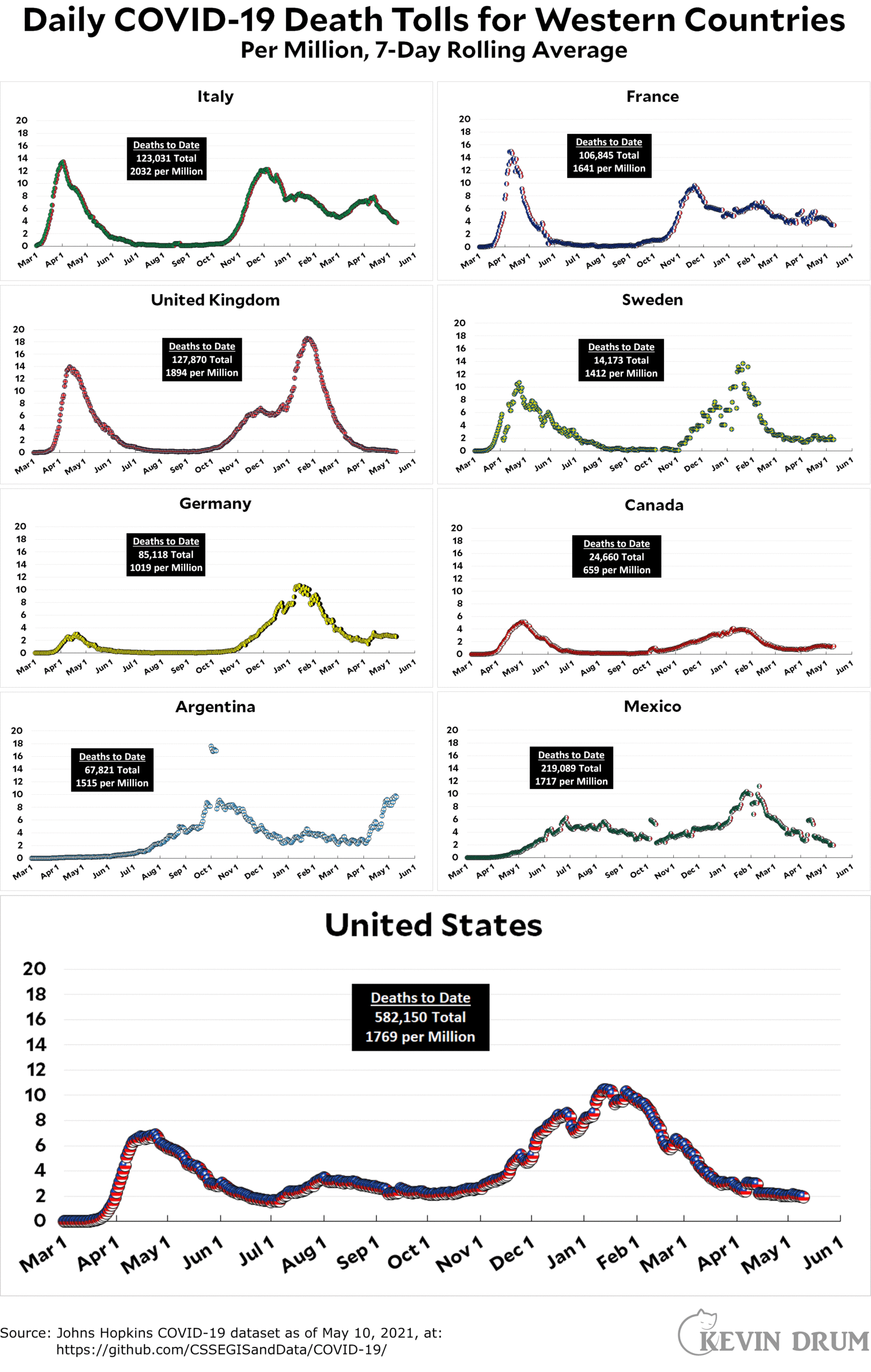
This cracks me up. Facebook is testing a new feature that will warn you if you're about to share a post without bothering to read it:
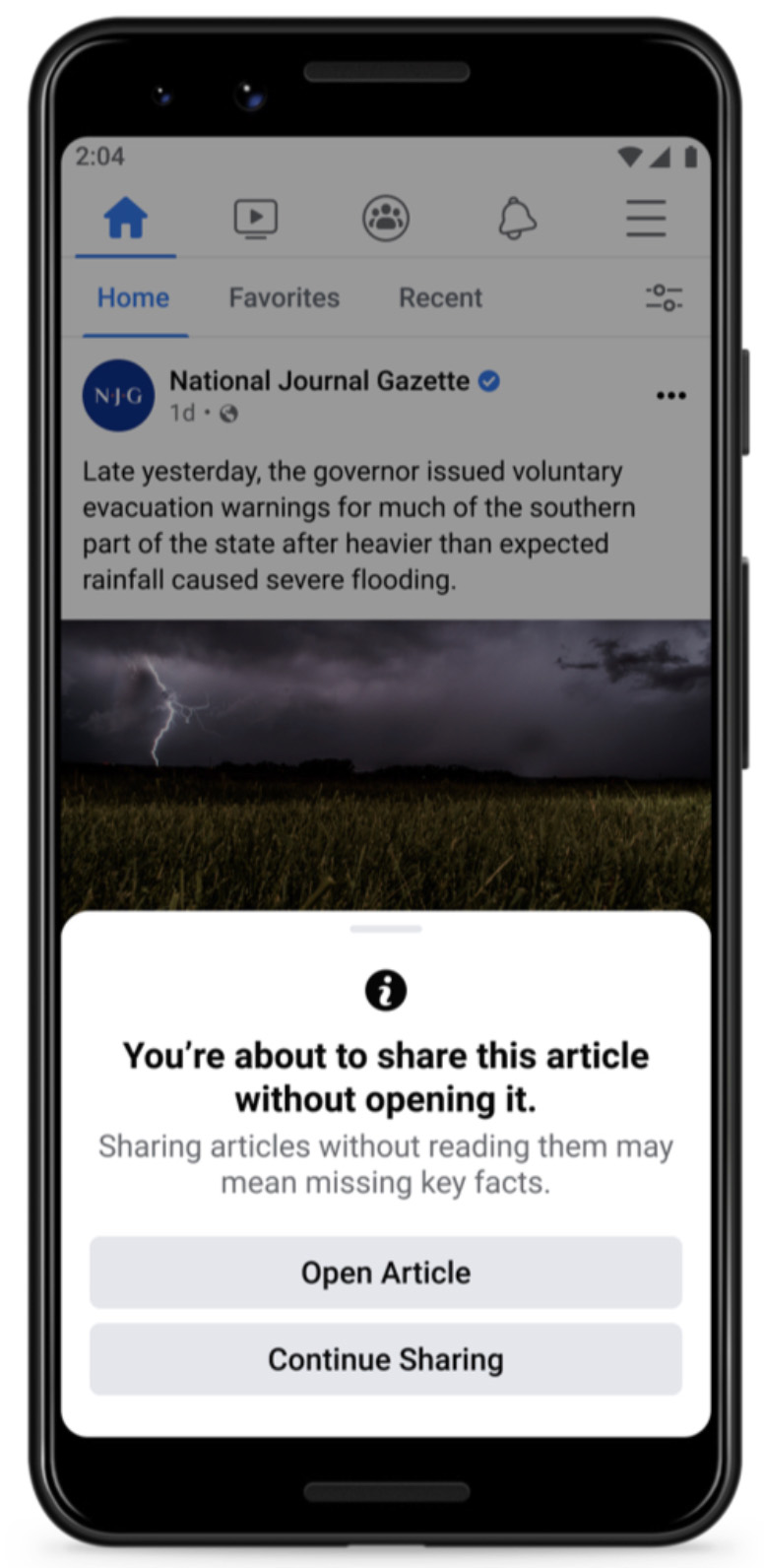
Facebook is meddling with the primal forces of nature! The very existence of the modern internet is based on people sharing things at a rate that precludes knowing anything about them. This hypersonic rate of sharing is the only thing that allows memes to go viral and thus is fundamental to Facebook's continuing survival.
Surely Mark Zuckerberg knows this? So what's the ulterior motive for doing this? To get people mad enough to demand that the warning be removed? To form the basis for some kind of research paper demonstrating that it doesn't make a difference? Or what? The idea that they are genuinely trying to slow the sharing of Facebook content doesn't bear even a moment's scrutiny.
Why has the Republican Party's leadership caved in to Donald Trump and his insistence that the 2020 election was stolen from him? Is it because they're afraid of Trump's base? Because they've gone stone cold nuts? Or what?
It turns out, apparently, that the answer is none of the above. If the latest scuttlebutt and blind quotes are to be believed, they've caved in to Trump thanks to ordinary old-school extortion. In particular, they believe that if they oppose Trump he will destroy the Republican Party in a spasm of sheer bloody-minded vengeance.
Has Trump actually told them this? Or have they simply accepted over time that this is the lay of the land? There's no telling, but it makes sense in any case. Trump, after all, plainly has no special loyalty to the Republican Party. And retribution against his enemies is his single strongest drive in life. If the GOP rejected him, he would reject them in return ten times over, probably by forming his own political party and taking with him half of all Republicans in existence.
Does knowing this make any difference? I'm not quite sure. But . . . maybe? I need to cogitate on this.
Inflation figures for April will be out on Wednesday and I am not looking forward to them. The headline rate will be around 3.5 - 4%, which is not really outrageous but certainly high enough to get the usual suspects yelling and screaming.
In reality, if you correct for the artificially low base year of 2020, inflation is running at around 2.5%.
Will anyone report that the official rate is temporarily bollixed and the real-world inflation rate is 2.5%? I would like to think so, but recent experience doesn't make me hopeful. But at least the 15,000 readers of this fine blog will know the truth.
WONKY APPENDIX: This might confuse some of you, but let's take a look at the various ways to estimate the annual inflation rate in April. Here is the CPI inflation index over the past few years:
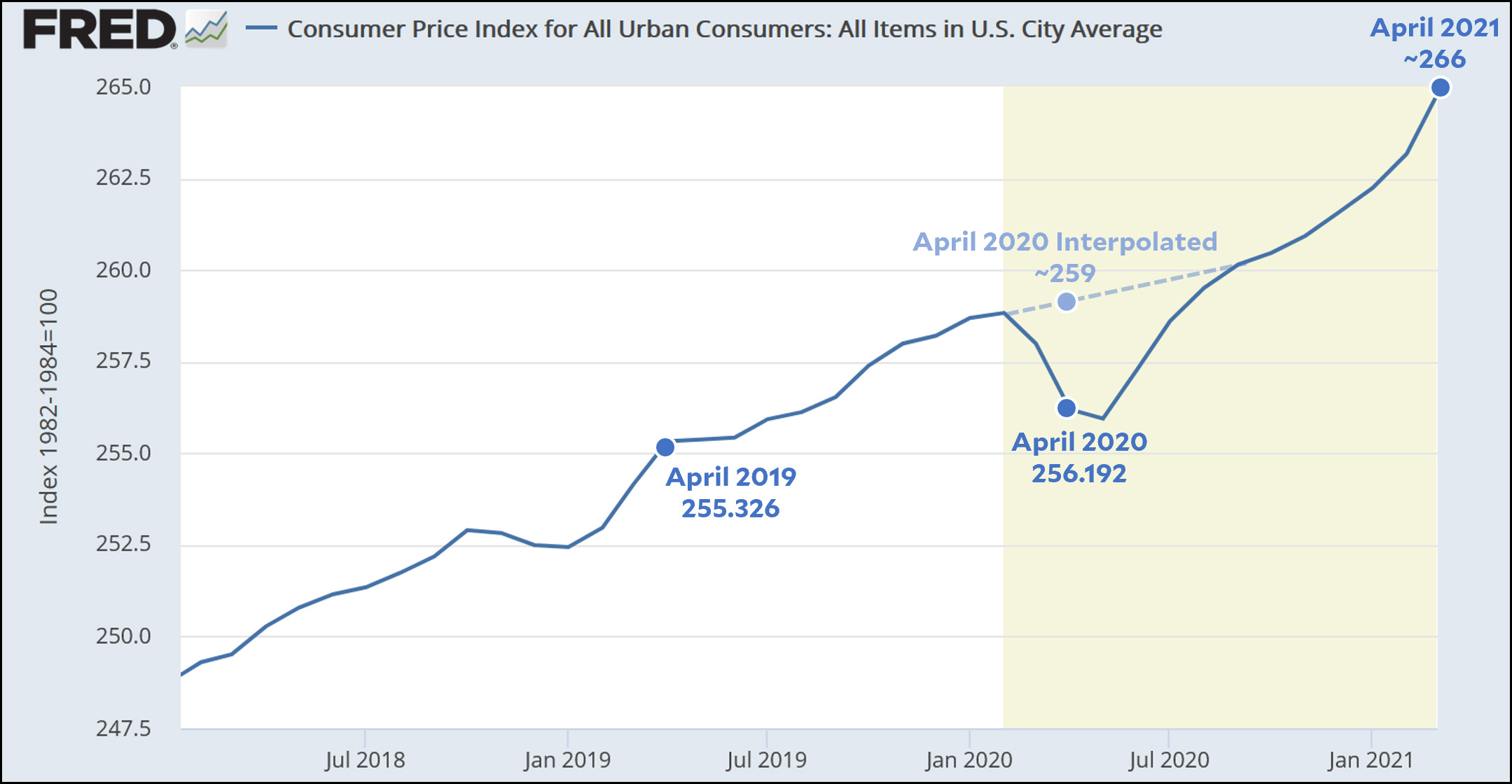
Method 1 (official): Use the April 2021 figure compared to the April 2020 figure. That produces 266 / 256.192 = 1.038, or 3.8%. As you can see, it is artificially high because April 2020 was in a temporary slough.
Method 2: Use the April 2021 figure compared to the April 2019 figure, then divide in half. This produces 266 / 255.326 = 1.042 or 4.2%. Half of that is 2.1%.
Method 3: Ignore the 2020 trough and interpolate the inflation index as if it had followed its usual trendline. This produces 266 / 259 = 1.027 or 2.7%.
Both method 2 and method 3 produce better real-world estimates of inflation than the official measure. Given the upward trend of the inflation index, my guess is that CPI over the past year has increased at closer to 2.7% than 2.1%, so probably around 2.5% or so.
In any case, definitely not 3.8%. That's the worst estimate of all.
This is sunset at Huntington Beach. The view is from Main Street looking northwest toward the condo complex across from 7th Street.
